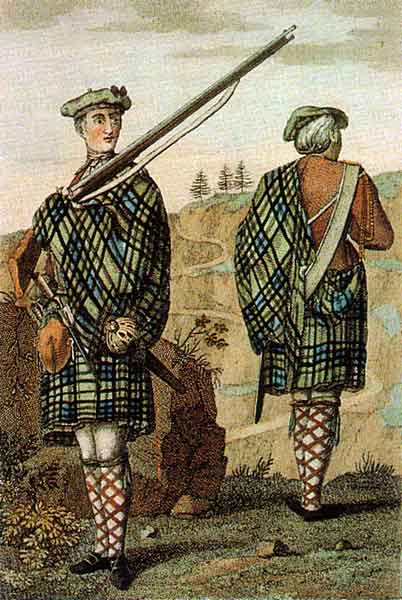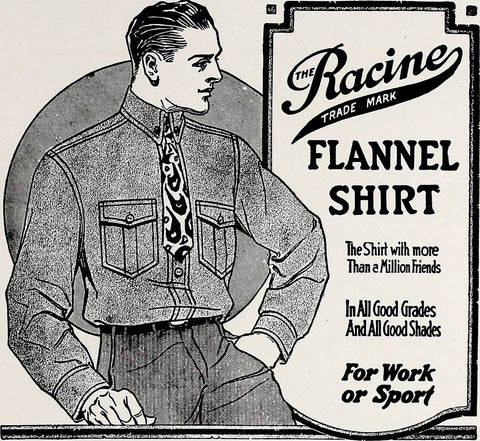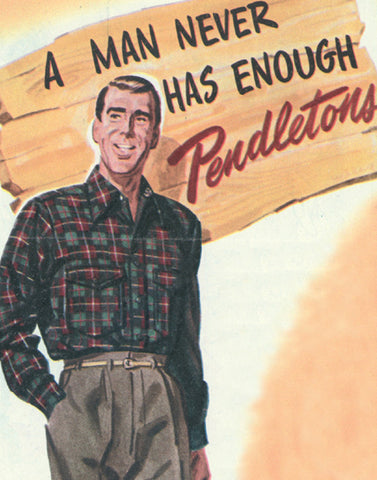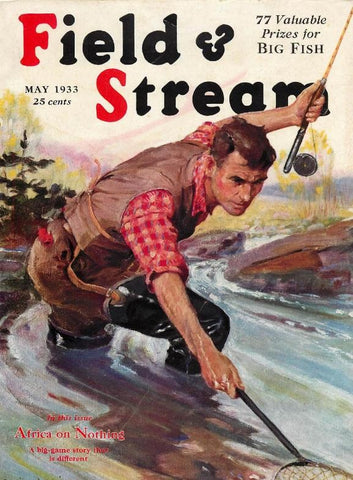The History of Flannel (and Why Men Love It!)
Dec 08, 2014
“Man at his birth is content with a little milk and a piece of flannel; so we begin, then presently find kingdoms not enough for us.” – Seneca, Roman Philosopher, 4 BC-65 AD
There may be no apparel which so closely relates to manliness as flannel. A man clad in that thick and loose manner, with his sleeves rolled up, seems ready for anything nature or war can throw at him. In fact, he seems all the ready to step confidently into whatever job needs a-doin’, and get to work. The connotation and association of flannel with manliness is not without merit. Flannel has a long history before grunge and even before the lumberjack and outdoorsman stereotypes.
What is Flannel? (Hint, it’s not plaid)
There is a cultural misconception that flannel and a checkered or plaid pattern are synonymous, primarily because we see them together so often. However, there is more to flannel than its appearance.
Flannel is a style of fabric
Flannel simply refers to a light, woven fabric which has a softness either from the natural fibers or a process of napping after the fabric is created. True flannel is made from wool yarn. When woven together the wool has a natural fluff to it and does not lay flat. It is sheered after the weaving process to give it a flat, soft appearance but still retains a natural nap. Cotton spins to very nice and tight threads, creating a finer and more air tight weave. However, cotton, as well as synthetic fibers, must be “brushed” or napped to produce the flannel effect that comes naturally with wool.
Wool vs. Cotton Flannel
In most cases we buy a flannel shirt based on appearance and not the differing characteristics of the fibers. In the case of flannel, wool is the clear winner. Not only was wool the original flannel fabric, but it is superior to cotton when it comes to cold weather work. Wool has natural moisture wicking properties that remove sweat from the body, whereas cotton traps moisture. Cotton = good for towels, Wool = good for work clothes.
Wool is also better at retaining heat when wet, giving it another advantage over cotton. In the fabric industry, cotton flannel is called Cotton or Canton Flannel whereas wool flannel is Woolen Flannel.
All that being said, if a cotton flannel shirt looks nice and seems to be good quality, get it. The differences in fabric are not noticeable for the casual man. The heft of the fabric and quality of the manufacturer make far more difference.
It’s Tartan, not Plaid (Usually)
The familiar “flannel” look of a sort of plaid pattern is actually called tartan, hailing from Scottish origins. This is confusing because in the U.S. we call the tartan pattern plaid, and that will likely not change. However, a plaid is a thing in Scotland, not a pattern. A plaid is a piece of tartan patterned cloth worn over the shoulder as an accessory with a kilt. But, just as we have made the tartan pattern synonymous with flannel, the same has happened with thinking of plaid as a pattern rather than a piece of clothing.

Highland soldiers wearing Plaids over their shoulders. The pattern of their kilts and plaids is known as tartan.
The History of Flannel
The exact origins of flannel are hard to determine, but the origin of the word and common style we see today can be traced back to 16th century Wales. It is thought that the word flannel comes from the Welsh word gwlanen, which became flannen, and eventually flannel. The French word Flanelle and German Flanell came a century or so later.
In the 19th century, during the industrial revolution, processing wool became easier and less expensive and the production of flannel took off. Every kind of working class man began to wear flannel clothing, but as underwear (their union jacks), not as shirts in the way we do now.
Hamilton Carharrt, founder of the now famous Carhartt clothing company, is supposedly credited with inventing the modern-day flannel shirt in 1889. Pendleton Woolen Mills began producing woolen goods in 1863 and is undoubtably credited with popularizing flannel shirts, especially for outdoorsmen, and continues making 100% USA made flannel shirts to this day (More on them below).
Here are a few pics of men in flannel over the years:




Why Flannel is so Manly
I suppose there was a time when armor and leather would have been considered far more manly than flannel, but over the years it is this soft woven fabric that has won out. Flannel’s popularity and association with the classic man’s-man can no doubt be related to marketing efforts over the years, but has also gained its seat of honor by living up to its purpose.

The classic image of a man in flannel featured in an Outdoor Life magazine cover. Notice the flannel underlining of his jeans.
From Underwear to Uniforms
As already stated, flannel production boomed in the 19th century, but primarily as underwear. As wars broke out the versatility of the fabric was born. Suits, uniforms, blankets, patches, and many other flannel items began to be produced. In the Civil War, flannel provided everything from underwear to uniforms.
At the turn of the 20th century, factories began shifting back to flannel production for the common man, which at the time was woodmen, farmers, and those in the industrial industries. During this period, flannel became an indispensable garment for Lumberjacks and Jack Pine Savages. The folk tales of Paul Bunyan were born, wearing his famous red and black tartan flannel shirt. That is until WWI, when they once again began producing for troops. By the start of WWII flannel had become common place with men of all types of outdoor work, from the fields to the woods, and outdoorsman magazines began popularizing the flannelled look we see when walking into any Bass Pro, REI, or other outdoors store. Men fortunate enough to return from the war took the emerging office jobs. Their familiarity with flannel, and the factories’ efficiency in producing the fabric, allowed flannel to come from the fields into the office in the form of suits and professional-type shirts.
From Grunge to Lumbersexuals (I don’t even like to write that word)
Grunge bands like Nirvana, Pearl Jam and others popularized flannel in the 90’s as part of their anti-everything-our-parents-did appeal, and flannel production once again took off. In the last several decades, flannel wear has continued to trend upward but has lost much of its practical purposes. Hipsters and Lumbersexuals — apparently these are guys that are similar to hipsters but look more like an official lumberjack though there is great doubt as to how much lumbering they can actually do — have made a strong move towards flannel because of its comfort and cool style.
Where to Get Real Flannel
Pendleton Woolen Mills is the only place I could find still making wool flannel here in the USA. The wool and production are all USA based and their shirts really look great. So many of those old advertisements for flannel shirts are Pendleton’s. I think it’s great that they are still in business and have not outsourced like so many other companies have done. Check them out and show them some support if you can.
Final Thoughts
I went through my closet when writing this article and was sad to see that none of the flannel shirts I owned were actually made from wool. This is a problem I need to correct. I will close by saying that saving a few bucks by purchasing a cheap flannel shirt will bite you in the end. A cheap, good-looking flannel shirt won’t look so good in a year. Save up your dough and get one that is thicker and better quality. Then, adorn yourself with the manliest garment ever made.

 “Man at his birth is content with a little milk and a piece of flannel; so we begin, then presently find kingdoms not enough for us.” – Seneca, Roman Philosopher, 4 BC-65 AD
“Man at his birth is content with a little milk and a piece of flannel; so we begin, then presently find kingdoms not enough for us.” – Seneca, Roman Philosopher, 4 BC-65 AD
